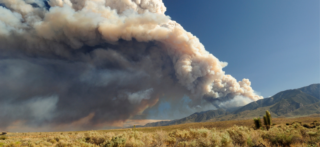Some media outlets have reported that poor visibility from the PG&E Dixie wildfire smoke may have caused the Bombardier Challenger jet crash in Truckee. If true, would that make PG&E liable?
Probably not.
PG&E is liable to those whose property burned in the Dixie Fire, or those whose property was damaged by smoke from the fire. That’s because California’s inverse condemnation doctrine essentially makes PG&E automatically liable for property damage claims resulting from fires that its equipment sparks. Further, PG&E may be liable to affected property owners for things like emotional distress under the legal doctrine of “Trespass by Fire.” Finally, PG&E would be liable for personal injuries or death resulting from the fire if the individual proves that the Dixie Fire was the result of PG&E’s negligence. That is, one injured by the Dixie Fire or its smoke can hold PG&E accountable if the Dixie Fire was the result of PG&E’s lack of due care in operating its facilities or in keeping the trees around its powerlines property trimmed.
liable for property damage claims resulting from fires that its equipment sparks. Further, PG&E may be liable to affected property owners for things like emotional distress under the legal doctrine of “Trespass by Fire.” Finally, PG&E would be liable for personal injuries or death resulting from the fire if the individual proves that the Dixie Fire was the result of PG&E’s negligence. That is, one injured by the Dixie Fire or its smoke can hold PG&E accountable if the Dixie Fire was the result of PG&E’s lack of due care in operating its facilities or in keeping the trees around its powerlines property trimmed.
Assuming for argument’s sake that the smoke for the fire contributed to the crash, it’s still unlikely PG&E can be held liable. The doctrine of inverse condemnation applies only to property damage claims, not to personal injury or death resulting from fires. The doctrine of Trespass by Fire applies only to injury suffered as a result of fire coming onto property owned or occupied by the one injured. So that wouldn’t apply either.
That leaves the doctrine of negligence. Assuming PG&E caused the Dixie Fire, and further assuming PG&E’s conduct that caused the fire was negligent, it still wouldn’t be enough. To recover on a negligence claim, the family members would also have to prove that PG&E had a “duty” to not subject their loved ones to the type of risk that PG&E’s conduct exposed them to. The concept of legal duty is tricky. Certainly, PG&E had a duty to those whose homes were burned because it was reasonably foreseeable that if it started a fire, property damage would result. But it’s a stretch to say that PG&E should have foreseen that smoke from a fire would reduce visibility for flights in the area and could contribute to a plane crash. Because such harm was not a “foreseeable” risk of igniting a fire, it’s unlikely a court would hold PG&E liable.
PG&E’s liability for Dixie Fire claims is most likely limited to property damage and injuries it’s fire caused on the ground.




